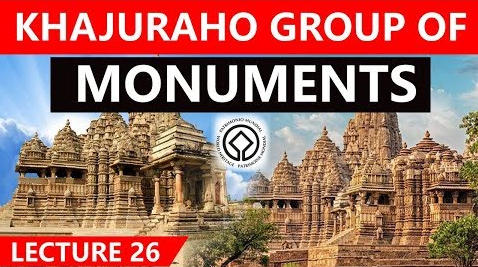Table of Contents
CULTURAL SITES
- Agra Fort (1983)
- Ajanta Caves (1983)
- Archaeological Site of Nalanda Mahavihara at Nalanda, Bihar (2016)
- Buddhist Monuments at Sanchi(1989)
- Champaner-Pavagadh Archaeological Park (2004)
- Chhatrapati Shivaji Terminus (formerly Victoria Terminus) (2004)
- Churches and Convents of Goa(1986)
- Elephanta Caves (1987)
- Ellora Caves (1983)
- Fatehpur Sikri (1986)
- Great Living Chola Temples (1987,2004)
- Group of Monuments at Hampi (1986)
- Group of Monuments at Mahabalipuram (1984)
- Group of Monuments at Pattadakal (1987)
- Hill Forts of Rajasthan (2013)
- Historic City of Ahmadabad (2017)
CULTURAL SITES
- Humayun’s Tomb, Delhi (1993)
- Khajuraho Group of Monuments (1986)
- Mahabodhi Temple Complex at Bodh Gaya (2002)
- Mountain Railways of India (1999,2005,2008)
- Qutb Minar and its Monuments, Delhi (1993)
- Rani-ki-Vav (the Queen’s Stepwell) at Patan, Gujarat (2014)
- Red Fort Complex (2007)
- Rock Shelters of Bhimbetka (2003)
- Sun Temple, Konârak (1984)
- Taj Mahal (1983)
- The Architectural Work of Le Corbusier, an Outstanding Contribution to the Modern Movement (2016)
- The Jantar Mantar, Jaipur (2010)
- Victorian Gothic and Art Deco Ensembles of Mumbai (2018)
NATURAL
- Great Himalayan National Park Conservation Area (2014)
- Kaziranga National Park (1985)
- Keoladeo National Park (1985)
- Manas Wildlife Sanctuary (1985)
- Nanda Devi and Valley of Flowers National Park(1988,2005)
- Sundarbans National Park (1987)
- Western Ghats(2012)
Mixed
- Khangchendzonga National Park (2016)
KHAJURAHO
- There are about 25 temples spread over an area of approximately 6 square Km. The temples are grouped into three categories depending on their orientation – the Western Group of Temples, the Eastern Group of Temples and the Southern Group of Temples.
- These temples are dedicated to several Hindu Gods and Goddesses along with deities in Jain beliefs. Among the temples that are standing till now, 6 are dedicated to Lord Shiva, 8 to Lord Vishnu, 1 each to Lord Ganesha and the Sun God, while 3 are dedicated to Jain Tirthankaras. The largest of the temples is the Kandariya Mahadeo Temple that is dedicated to the glory of lord Shiva.
KHAJURAHO
- The temples are known for their elaborate and intricate carvings and sculpture. While these sculptures depict various scenes from everyday lives, the Khajuraho temples are primarily known for the artful and erotic depiction of the female form as well as various sexual practices of the time.
- The four Jain temples are primarily located among the eastern group of temples. The Parasvanath, Adinath, Shantinath a nd Ghantai temples are the ones dedicated to worshipping of the Jain Trithankaras.
KHAJURAHO
- The Khajuraho Group of Monuments Hindu temples and Jain temples is in Chhatarpur district, Madhya Pradesh, India, about 175 kilometres (109 mi) southeast of Jhansi.
- They are a UNESCO World Heritage Site. The temples are famous for their nagara-style architectural symbolism and their erotic Sculptures.
HISTORY
- The Khajuraho group of monuments was built during the rule of the Chandela dynasty. The building activity started almost immediately after the rise of their power, throughout their kingdom to be later known as Bundelkhand.
- Most temples were built during the reigns of the Hindu kings Yashovarman and Dhanga.
- Khajuraho temples were in active use through the end of the 12th century. This changed in the 13th century; after the army of Delhi Sultanate, under the command of the Muslim Sultan Qutb–ud-din Aibak, attacked and seized the Chandela kingdom.
HISTORY
- Central Indian region, where Khajuraho temples are, was controlled by various Muslim dynasties from the 13th century through the 18th century. In this period, some temples were desecrated, followed by a long period when they were left in neglect.
- In the 1830s, local Hindus guided a British surveyor, T.S. Burt, to the temples and they were thus rediscovered by the global audience.
- The temple site is within Vindhya mountain range in central India. The center of this region is Khajuraho, set midst local hills and rivers. The temple complex reflects the ancient Hindu tradition of building temples where gods love to pray
REPRESENTATION
- The artwork symbolically highlight the four goals of life considered necessary and proper in Hinduism – dharma, kama, artha and moksha.
- While they are famous for their erotic sculpture, sexual themes cover less than 10% of the temple sculpture.
- Further, the images are arranged in a configuration to express central ideas of Hinduism. All three ideas from Āgamas are richly expressed in Khajuraho temples – Avyakta, Vyaktavyakta and Vyakta
TEMPLE
- The Chausat Yogini temple was the first of the temples to be built among the temples still standing; it was built around late 9th century. Yashovarman, also known as Lakshmanvarman, ruled between 925 and 950 CE.
- Dhangadeva, son of Lakshmanvarman, commissioned the two most well-known Shiva temples, the Vishwanath Temple and the Vidyanath Temple. He also commissioned the Parasvanath Temple for the Jain worshippers.
GROUPINGS
- First is the western group of temples comprising of the Lakshmana Temple, Kandariya Mahadeo Temple, Devi Jagadambi Temple, Chausat Yogini Temple, Chitragupta Temple, Matangeshwara Temple, Varaha Temple and Vishwanath Temple.
- The Eastern Group of Temples includes the Parasvanath Temple, Ghantai Temple, Adinath Temple, Hanuman Temple, Brahma Temple, Vamana Temple and Javari Temple.
- The third and comparatively smaller group of temples id the Southern Temples Group include the Dulhadev Temple, Beejamandal Temple and Chaturbhuj or Jatkari Temple.
ACHITECTURE

CHAUSAT YOGINI TEMPLE

LAKSHAMANA TEMPLE
MATANGESHWAR

























 WhatsApp
WhatsApp